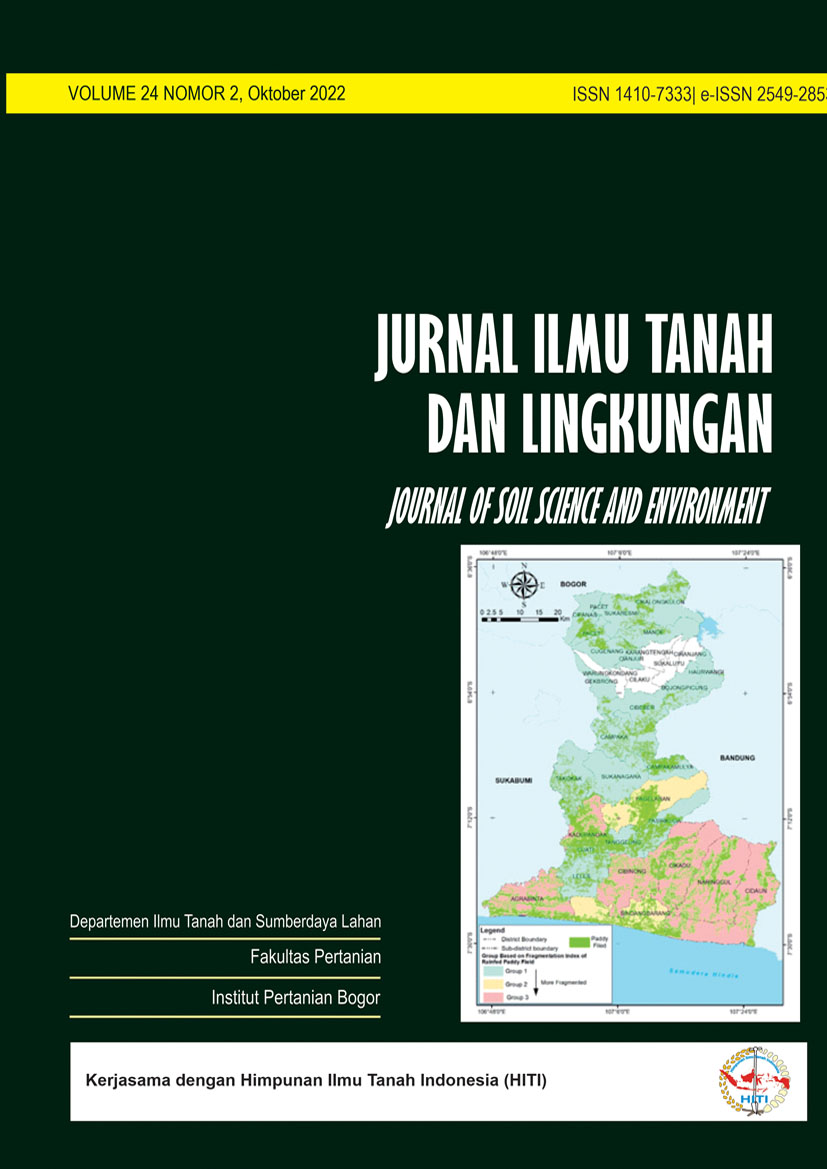The Effectiveness of Liquid Bio-Fertilizer on Rice Plants (Oryza sativa) and the Analysis of Farming Business
Efektivitas Pupuk Hayati Cair pada Tanaman Padi Sawah (Oryza Sativa) Serta Analisis Usaha Taninya
Abstract
Farmers in Indonesia are beginning to understand the importance of biofertilizers with standardized quality and effectiveness required by the Indonesian Ministry of Agriculture. So that many biological fertilizers circulating in the market need to be researched to test their quality and effectiveness. The purpose of this study was to test the quality and effectiveness, as well as farm business analysis of liquid biological fertilizers on lowland rice (Oriza sativa). The treatments were arranged in 5 levels of fertilization, namely: without application of fertilizer or control (P0), 1.00 dose of NPK (P1), 1.00 dose of NPK + 1.00 dose of biological fertilizer (P2), 0.75 dose of NPK + 1.00 dose of biological fertilizer (P3), 0.50 dose NPK + 1.00 dose of biofertilizer (P4). The experiment was carried out with 4 replications so that there were 20 experimental units. Each experimental unit is a plot of land with an area of 25 m2. The results showed that the quality test met the criteria of Ministry of Agriculture No. 1 of 2019, also the application of biological fertilizers in the field in general resulted in the growth and yield of lowland rice plants that were the same as the comparison, and better than the control treatment. The treatment of 0.75 doses of NPK + 1.00 doses of biological fertilizers is the most effective and beneficial treatment agronomically with an RAE value of 100%, and economically with an R/C value of 1,83.
Downloads
References
Azeem, K., A. Khan, F. Naz, M. Ilyas, I. Azeem, F. Anwar and W. Ahmad. 2018. The impact of different P fertilizer sources on growth, yield and yield component of maize varieties. AgriRes & Tech: Open Access J 13(3): 1-5.
Baniuniene A., Zekaite V. 2008. The effect of mineral and organic fertilizers on potato tuber yield and quality. Latvian Journal of Agronomy (11): 202-206.
Bloom, A.J., J. Frensch, A.R. Taylor. 2005. Influence of inorganic nitrogen and pH on the elongation of maize seminal roots. Annals of Botany, Vol. 97: 867–873.
Conde, L.D., Z. Chen, H. Chen, and H. Liao. 2014. Effects of phosphorus availability on plant growth and soil nutrient status in the rice/soybean rotation system on newly cultivated acidic soils. American Journal of Agriculture and Forestry 2(6): 309-316.
Engels, C., E. Kirkby, P. White. 2012. Chapter 5 – mineral nutrition, yield and source– sink relationships. Marschner's Mineral Nutrition of Higher Plants. pp. 85–133.
Hammond, JP and P.J White. 2008. Sucrose transport in the phloem: integrating root responses to phosphorus starvation. J Exp Bot 59: 93–109.
Handayanto, E. 1999. Komponen biologi tanah sebagai bioindikator kesehatan dan produktivitas tanah. Universitas Brawijaya. Malang.
Hawkesford, M., W. Horst, T. Kichey, H. Lambers, J. Schjoerring, I.S.Møller, and P. White. 2012. Functions of Macronutrients. P 135-189. In Marschner, P (Eds). Marschner’s Mineral Nutrition of Higher Plants Third Edition. Academic Press. London. UK.
Hendriani, R, S.K. Putri, L. Hanum dan Mukhlis. 2018. Analisis pendapatan petani padi pengguna pupuk hayati dan anorganik di kecamatan harau. Lumbung Vol. 17, No. 2: 75-82.
Huber, D., V. Römheld, and M. Weinmann. 2012. Relationship between nutrition, plant diseases and pests. p 283-298. In Marschner, P (Eds). Marschner’s Mineral Nutrition of Higher Plants Third Edition. Academic Press. London. UK
Kaplan, L., P. Tlustos, J. Szakova, J. Najmanova, and K. Brendova. 2016. The effect of NPK fertilizer with different nitrogen solubility ongrowth, nutrient uptake and use by chrysanthemum. Journal of Plant Nutrition Vol. 39(7): 993–1000.
Kwon, S.J., H.R. Kim, S.K. Roy, H.J. Kim, H.O. Boo, S.H. Woo, and H.H. Kim. 2019. Effects of nitrogen, phosphorus and potassium fertilizers on growth characteristics of two species of Bellflower (Platycodon grandiflorum). Journal of Crop Science and Biotechnology Vol. 22:481–487.
Lee, J. 2010. Effect of application methods of organic fertilizer on growth, soil chemical properties and microbial densities in organic bulb onion production. Scientia Horticulturae 124 (2010) 299–305.
Lin, W., M. Lin, H. Zhou, H. Wu, Z. Li, and W. Lin. 2019. The effects of chemical and organic fertilizer usage on rhizosphere soil in tea orchards. PLOS ONE. https://doi.org/10.1371/journal.pone.0217018. Page:1-6.
Liu, B., Wang, X., Ma, L., Chadwick, D., Chen, X., 2020. Combined applications of organic and synthetic nitrogen fertilizers for improving crop yield and reducing reactive nitrogen losses from China’s vegetable systems: a metaanalysis, Environmental Pollution, https://doi.org/10.1016/ j.envpol.2020.116143.
Purbajanti,E.D., W. Slamet, E. Fuskhah, and Rosyida. 2019. Effects of organic and inorganic fertilizers on growth, activity of nitrate reductase and chlorophyll contents of peanuts (Arachis hypogaea L.). IOP Conf. Series: Earth and Environmental Science 250. doi:10.1088/1755-1315/250/1/012048. Page 1-7.
Ramírez-Pérez, L.J, A.B. Morales-Díaz, A. Benavides-Mendoza, K.D. Romenus, S. González-Morales, A. Juárez-Maldonadoe. 2018. Dynamic modeling of cucumber crop growth and uptake of N, P and K under greenhouse conditions. Scientia Horticulturae 234: 250–260
Rasul, G.A.M., Sarkawet T.A., and Mohammed Q.A. 2015. Influence of different organic fertilizers on growth and yield of wheat. American-Eurasian J. Agric. & Environ. Sci., 15 (6): 1123-1126.
Siwanto, T., Sugiyanta, dan M. Melati. 2015. Peran pupuk hayati dalam peningkatan efisiensi pupuk anorganik pada padi sawah (Oryza sativa L.). J. Agron. Indonesia 43 (1): 8 – 14.
Stevenson, F.T. (1982) Humus Chemistry. John Wiley and Sons, New York.
Copyright (c) 2022 Jurnal Ilmu Tanah dan Lingkungan

This work is licensed under a Creative Commons Attribution-ShareAlike 4.0 International License.
Department of Soil Science and Land Resources Departemen Ilmu Tanah dan Sumberdaya Lahan, Faculty of Agriculture Fakultas Pertanian, IPB University



















